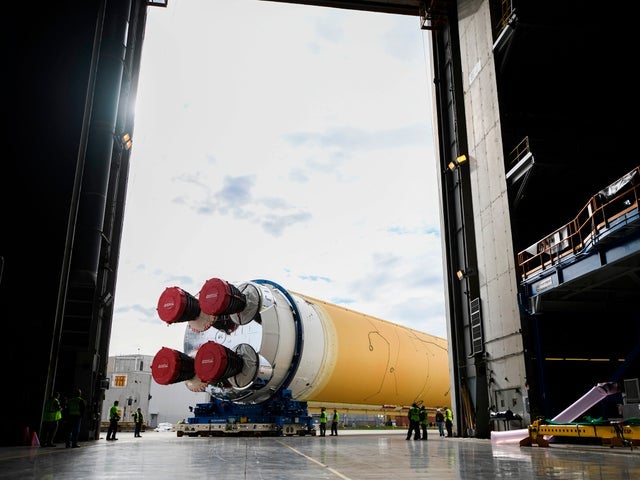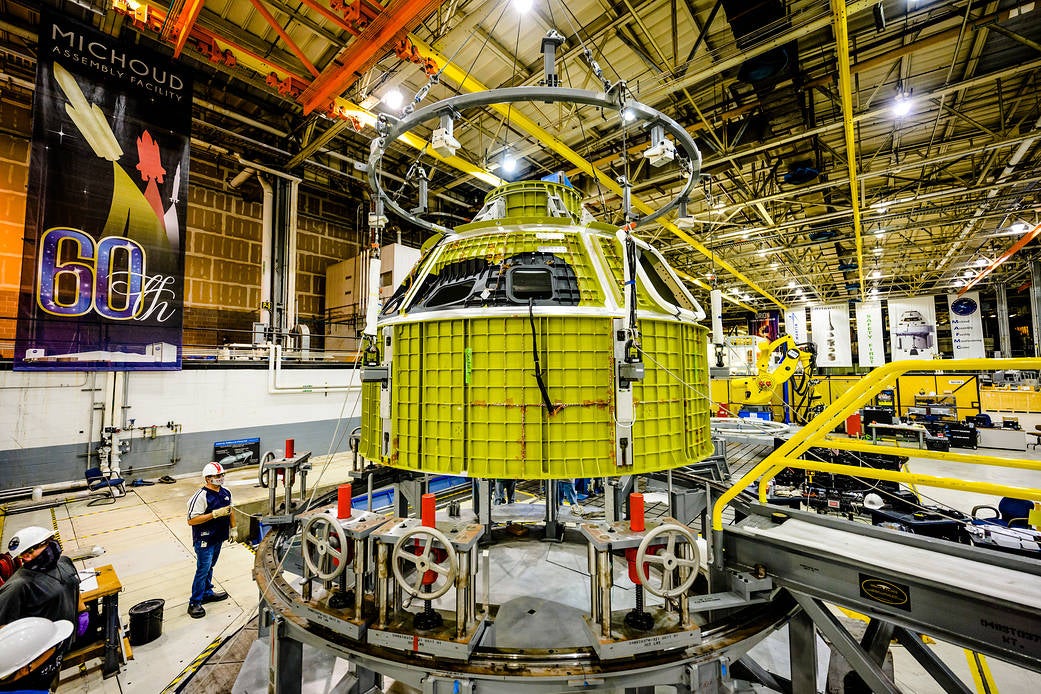Artemis I launch date slips as Nasa delays key launch pad test for new rocket
Nasa delays ‘wet dress rehearsal’ of new Moon rocket until sometime in March

Your support helps us to tell the story
From reproductive rights to climate change to Big Tech, The Independent is on the ground when the story is developing. Whether it's investigating the financials of Elon Musk's pro-Trump PAC or producing our latest documentary, 'The A Word', which shines a light on the American women fighting for reproductive rights, we know how important it is to parse out the facts from the messaging.
At such a critical moment in US history, we need reporters on the ground. Your donation allows us to keep sending journalists to speak to both sides of the story.
The Independent is trusted by Americans across the entire political spectrum. And unlike many other quality news outlets, we choose not to lock Americans out of our reporting and analysis with paywalls. We believe quality journalism should be available to everyone, paid for by those who can afford it.
Your support makes all the difference.Nasa will delay a key test of its Space Launch System (SLS) rocket and Orion spacecraft until no sooner than March, the US space agency announced on Wednesday, further delaying the launch of the first test flight of its new Moon program.
Nasa previously planned to roll SLS and Orion onto Pad 39B at the Kennedy Space Center in Florida in late February for a “wet dress rehearsal” of the rocket’s launch sequence. The dress rehearsal is a necessary stop before the first SLS and Orion test flight, and could push that launch into April or May.
“We really don’t know until we do the wet dress rehearsal how much additional time it will take to get ready to launch,” Nasa Deputy associate administrator for exploration systems development Tom Whitmeyer said in a press conference on Wednesday. “We hope it won’t be a significant amount of time.”
The SLS and Orion are key components of Nasa’s Artemis program, which aims to return humans to the Moon sometime in 2025. SLS, when it launches, will be the most powerful rocket to fly since the Saturn V rocket that last took astronauts to the Moon in 1972, while Orion will serve as a 21st-century version of the Apollo space capsule.
An uncrewed test flight, Artemis I, was originally scheduled for 12 February. But in December, Nasa announced it would delay the Artemis I launch until sometime in March due to testing issues with the SLS.
Nasa officials said there were no specific problems leading to the delay in the dress rehearsal test, and Whitemeyer said the quantity of work necessary to prepare the SLS led to the decision to delay the test.
“This is a big vehicle, it’s a lot of instrumentation that needs to be finished and prepared for the final closeout activity,” he said. “It’s a really big vehicle.
Nasa successfully completed a simulated launch countdown test of the 98-meter tall SLS on 24 January, which tested the operation of the software handling the ground launch sequence for the rocket. The dress rehearsal will involve rolling the SLS onto the launch pad, filling it with the cryogenic liquid hydrogen fuel and liquid oxygen oxidizer, and again simulating the launch countdown before emptying the rocket of fuel.
Wednesday’s announcement keeps the Artemis program slightly behind schedule. When first announced by the Trump administration in 2017, the goal of Artemis was to land humans on the Moon in 2024.

But in November, Nasa administrator Bill Nelson announced the space agency would miss that goal, citing funding issues and legal disputes among contractors involved in the Artemis program. Artemis III, the mission that will return humans to the Moon, will now launch sometime in 2025.
Artemis II, a crewed lunar flyby mission, is scheduled to fly in May 2024, assuming Artemis I still launches sometime in 2022. The April Artemis I launch window is opens 8 April through 23 April, and the May launch window opens 7 May and closes on 21 May, according to Artemis I mission manager Mike Serafin.
Asked how NASA was juggling the need to meet deadlines while also ensuring safe and successful Artemis operations, NASA exploration ground systems manager Mike Bolger said that while his team was working quickly, safety was their priority.
“If you miss your launch date and you have a successful launch, nobody’s going to remember you missed your launch date,” Bolger said. “But if you hold your launch date and you have an unsuccessful launch, nobody is ever going to forget.”


Join our commenting forum
Join thought-provoking conversations, follow other Independent readers and see their replies
Comments